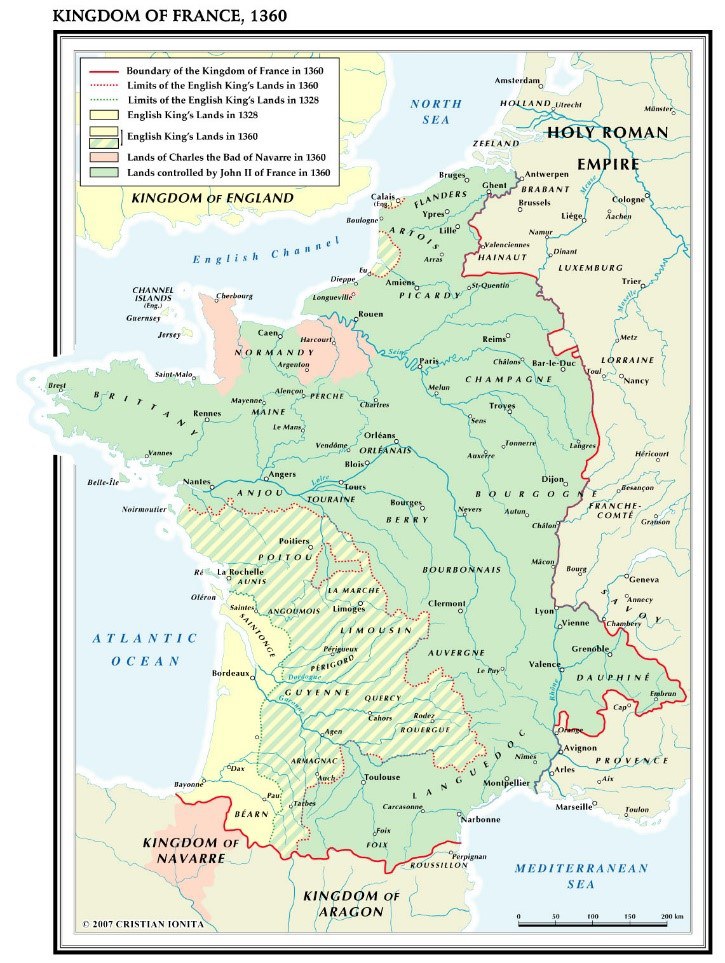The Creation of France
Chapter 8 : Salic Law and the Throne of France
In 1316, a dispute arose as to the succession to the crown of France. Various interpretations of the Salic law (ancient Frankish law) as it applied to inheritance had been made. Some thought that women could inherit in default of males, and this was the general practice in many territories; others that inheritance could pass through a woman, although she could not inherit herself – thus from grandfather to grandson or uncle to nephew. The throne of France had passed in unbroken father to son line from 987 to 1316. In that year, Louis X died, leaving a daughter and a pregnant wife.
It was agreed that Louis’ brother, Philip, Count of Poitou, would act as regent until either the baby (which proved to be a boy) or Louis’ daughter, Joan (1312 – 1349), attained her majority. On the death of the baby, named Jean I, Philip had himself proclaimed Philip V, claiming that Joan could not inherit, especially as her mother, Margaret of Burgundy, had been accused of adultery.
Joan’s grandmother, Agnes, Duchess of Burgundy, was a daughter of Louis IX of France, and she supported Joan. An Estates-General was called, and it was agreed, although not by asserting that females could not inherit, but rather that available males were preferred, that Philip would take the throne. Joan eventually succeeded to the throne of Navarre, which had come to Louis X through his mother, Joan I of Navarre.
Philip V had no sons, and the throne was inherited by his brother, Charles IV, who also had only daughters. It was decided that neither Philip’s nor Charles’ daughters could either inherit, or transmit their claims. Philip and Charles’ sister, Isabelle, married to Edward II of England, was also excluded. The throne passed peacefully to their first cousin, Philip VI (1293 – 1350).
Philip might have been left undisturbed, until in May 1336, alleging that Edward III of England, as Duke of Aquitaine, had failed in his duties as a vassal, attempted to confiscate Guyenne, precipitating the Hundred Years’ War.

